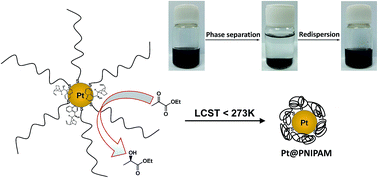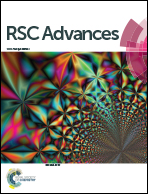Pt nanoparticles stabilized by thermosensitive polymer as effective and recyclable catalysts for the asymmetric hydrogenation of ethyl pyruvate
Abstract
Thermosensitive and thiol-terminated poly(N-isopropylacrylamide)s (PNIPAM-SHs) were synthesized and used to stabilize Pt nanoparticles. After chiral modification with cinchonidine, these nanocatalysts were firstly applied in the asymmetric hydrogenation of ethyl pyruvate. The influences of reaction solvent, chiral modifier concentration, hydrogen pressure, mean molecular weight and amount of polymer on the catalytic performance were investigated. These colloidal Pt catalysts exhibited remarkably high catalytic activity and enantioselectivity. Especially, high turnover frequencies up to 17 820 h−1 were achieved, which is the best result for this reaction with regard to the colloidal Pt catalysts. The high catalytic activity was associated with the high hydrophobicity of isopropyl groups in polymer moieties in the catalyst. Moreover, recycling experiments showed that the thermosensitivity of PNIPAM-SH made these colloidal Pt catalysts easier to recover and reuse. Excellent stability and reusability were presented over these catalysts, and no obvious decrease in catalytic activity and enantioselectivity was observed for eleven runs.


 Please wait while we load your content...
Please wait while we load your content...